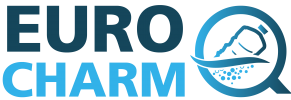Objectives
The overall objective of EUROqCHARM is to develop optimised, validated and harmonised methods for monitoring and assessment of plastics in the environment, as well as blueprints for standards and recommendations for policy and legislation.

EUROqCHARM will co-develop these methods and recommendations using a multi-stakeholder approach, whereby the project is structured to bring together relevant stakeholders to enable cooperation and participation in the dialogue, decision making and implementation of solutions. This step is critical, as the necessary developments require the engagement and collaboration of researchers and various stakeholders with a thorough understanding of the complexity arising from the wide array of polymer types and particle sizes dispersed in different environmental matrices. To this end, the EUROqCHARM partners, advisory board members and associated stakeholders include all relevant research areas (natural sciences: marine, surface, groundwater, drinking and waste water, soil, air; analytical chemistry etc.), industry (instrument manufacturers, plastic producers and commercial laboratories), regulators – United Nations (UN), EU and national level, standardisation bodies – European Committee for Standardisation (CEN) and International Organisation for Standardisation (ISO), professional associations and societies - e.g., Society of Environmental Toxicology and Chemistry (SETAC), policy makers (UN, EU and national level) and national and international Non-Governmental Organisations (NGOs). This sets EUROqCHARM in a unique position to coordinate the validation of the available methods and production of harmonised protocols for assessing plastic contamination that are also accessible to less-developed countries.

More specifically, EUROqCHARM’s specific objectives are:
- Identification of state-of-the-art methods for sample collection, sample preparation and analysis of plastics (nano-, micro-, macro-) in four different environmental matrices (water, soil/sediment, air and biota) currently in use by research institutes, Small and Medium-sized Enterprises (SMEs) and other relevant research units through a systematic review of current practices amongst researchers, institutions and international working groups. (achieved through Work Package 1)
- Identification of state-of-the-art protocols, recommendations and guidelines, which are currently being used for monitoring and assessment of plastics in different environmental matrices by European member states, through a systematic review of current practices of international working groups and institutions. (achieved through Work Package 2)
- Harmonising sample preparation, analysis and data reporting formats as recommendations for standards through validation and quality assurance of identified candidate standard methods in a European-wide intercalibration exercise, using newly prepared certified reference materials and quality assured and controlled studies. (achieved through Work Package 2)
- Harmonising monitoring methods that can be used by stakeholders to formulate and implement policy and legislation at European and international levels, through the development of recommended guidelines. (achieved through Work Package 3)
- Capacity building to facilitate and accelerate adoption of developed standards and guidelines by EU policy and legislation through the creation of a platform for knowledge exchange between scientists, industry, standardisation bodies (CEN, ISO etc.) and governance. (achieved through Work Package 4)
More information on all the Work Packages
Through the planned work, EUROqCHARM will improve the understanding of the methods required for monitoring plastic pollution and, ultimately, contribute to the establishment of national, EU and global monitoring standards that will be applicable for future policies for mitigation of plastic pollution. Furthermore, the recommended harmonised methods will improve the capacity to acquire relevant and standardised knowledge on plastics in the global environment, and the effects on biota, which can be efficiently compared.
